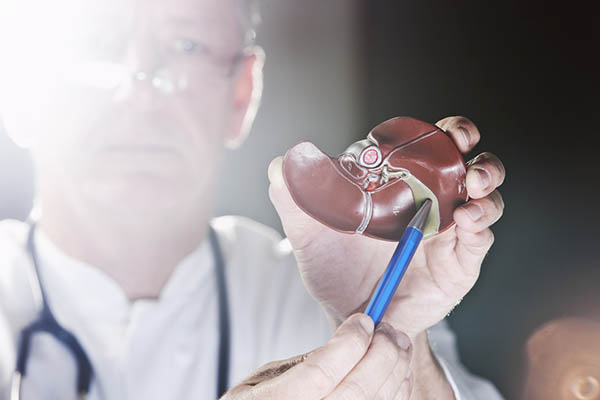Understanding Gallstones
Gallstones are hardened deposits of digestive fluid that can form in your gallbladder, a small organ located beneath your liver. The gallbladder stores bile, a digestive fluid produced by the liver. Gallstones can vary in size and number and can cause significant pain and complications if they obstruct the bile ducts.
Symptoms of Gallstones
Gallstones can be asymptomatic, meaning they do not always cause symptoms. However, when symptoms occur, they can include:
Biliary Colic
- Severe Abdominal Pain: Sudden and intensifying pain in the upper right portion of your abdomen, which may also radiate to your right shoulder or back.
- Duration: Pain can last from a few minutes to several hours and typically occurs after eating a fatty meal.
- Nausea and Vomiting: Accompanying the abdominal pain, these symptoms can be quite severe.
Digestive Disturbances
- Indigestion: A feeling of fullness or bloating after meals.
- Gas and Belching: Increased gas production and frequent belching.
Inflammation and Infection
- Cholecystitis: Inflammation of the gallbladder, which can cause intense, steady pain in the upper right abdomen. It may be accompanied by fever and chills.
- Jaundice: Yellowing of the skin and eyes, indicating that a gallstone may be blocking the bile ducts.
- Dark Urine and Light-colored Stools: Changes in the color of urine and stools due to bile obstruction.
Complications
- Pancreatitis: Gallstones can block the pancreatic duct, causing inflammation of the pancreas.
- Cholangitis: Infection of the bile ducts, which can cause fever, chills, and severe abdominal pain.
Surgical Treatment Options for Gallstones
When gallstones cause significant symptoms or complications, surgical removal of the gallbladder (cholecystectomy) is often recommended. There are two main types of cholecystectomy:
Laparoscopic Cholecystectomy
Procedure
- Minimally Invasive Surgery: This is the most common method for gallbladder removal. The surgeon makes several small incisions in the abdomen and inserts a laparoscope (a thin tube with a camera) and surgical instruments.
- Visual Guidance: The laparoscope sends a live video feed to a monitor, guiding the surgeon to remove the gallbladder.
Benefits
- Shorter Recovery Time: Patients typically go home the same day or the next day after surgery.
- Less Postoperative Pain: Smaller incisions result in less pain and quicker recovery.
- Fewer Complications: Reduced risk of infection and shorter hospital stay compared to open surgery.
Recovery
- Postoperative Care: Most patients can return to normal activities within a week. Light activities can usually be resumed in a few days, but strenuous activities should be avoided for a few weeks.
- Dietary Adjustments: Some temporary dietary adjustments may be necessary as the body adapts to the absence of the gallbladder.
Open Cholecystectomy
Procedure
- Traditional Surgery: An open cholecystectomy involves a larger incision in the abdomen to remove the gallbladder.
- Direct Access: This method provides direct access to the gallbladder and surrounding structures.
Indications
- Complex Cases: Open surgery may be necessary if there are complications such as severe inflammation, infection, or scar tissue from previous surgeries.
- Patient Health: Some patients with certain medical conditions may be better candidates for open surgery.
Recovery
- Longer Hospital Stay: Patients typically stay in the hospital for 2-4 days post-surgery.
- Extended Recovery Period: Recovery time is longer, with most patients needing 4-6 weeks to fully recover.
Non-Surgical Treatments
While surgery is the definitive treatment for symptomatic gallstones, there are non-surgical options for patients who cannot undergo surgery or prefer to avoid it:
Medications
- Oral Dissolution Therapy: Medications such as ursodeoxycholic acid can help dissolve cholesterol gallstones over time. This treatment is often slow and not always effective.
Endoscopic Procedures
- Endoscopic Retrograde Cholangiopancreatography (ERCP): A procedure used to remove gallstones from the bile ducts. A flexible tube with a camera (endoscope) is inserted through the mouth, stomach, and into the bile ducts. Instruments can then be used to remove the stones.
Shock Wave Lithotripsy
- Extracorporeal Shock Wave Lithotripsy (ESWL): A non-invasive procedure that uses shock waves to break gallstones into smaller pieces that can pass more easily through the bile ducts. This method is less commonly used and typically reserved for specific cases.
Conclusion
Gallstones can cause significant discomfort and lead to serious complications if not treated appropriately. Recognizing the symptoms early and consulting with a healthcare provider can help determine the best treatment approach. Surgical removal of the gallbladder, particularly through laparoscopic cholecystectomy, is the most effective treatment for symptomatic gallstones. Non-surgical options are available but may be less effective and slower. If you experience symptoms of gallstones, seek medical advice to discuss the most suitable treatment options for your condition.



 Close
Close